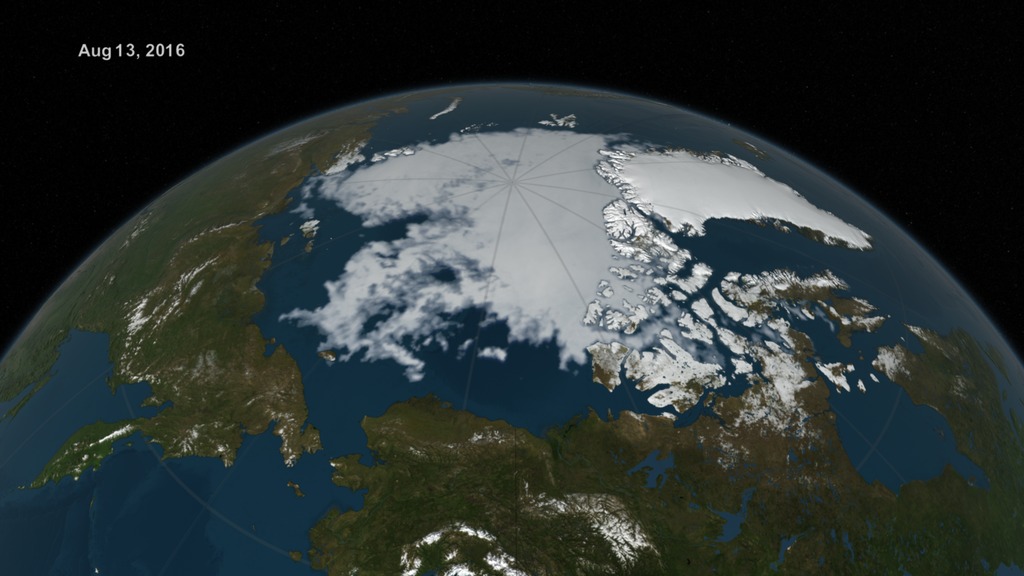The New Arctic

Scientists say low levels of sea ice cover in the Arctic are now the norm.
Arctic sea ice has seen a continued decline in recent decades, and scientists say the downward trend isn't likely to change. In fact, low levels of sea ice coverage have become the new normal. The floating cap of sea ice that blankets the Arctic Ocean and surrounding seas grows in the winter and shrinks in the summer. Since 1978, scientists have monitored changes to the annual maximum and minimum extent of the sea ice cover using satellites. Measurements show the minimum yearly Arctic sea ice extent is declining at a rate of 13.4 percent per decade. This year’s melt season started with a bang, with a record low maximum extent in March and relatively rapid ice loss through May that slowed down in June. Although this year’s decline will probably not end in a new, all-time low (the minimum extent is typically reached in September), scientists expect the area of the Arctic covered by sea ice will rank among the lowest on record. Watch the video to see the evolution of this year's Arctic sea ice cover from its wintertime maximum extent.
This visualization created from satellite data shows daily changes in Arctic sea ice cover from March 24 through August 13, 2016.

Image of melting sea ice in the Chukchi Sea off the coast of Barrow, Alaska, taken on July 20, 2016.

Pools of water known as melt ponds, form on the sea ice during the summer months when the Arctic is fully illuminated by the sun.

A new NASA satellite called ICESat-2, launching in 2018, will use lasers to help scientists estimate changes to Arctic sea ice thickness.
For More Information
See NASA.gov
Credits
Please give credit for this item to:
NASA's Scientific Visualization Studio
Sea ice photos courtesy of NASA/GSFC/Kate Ramsayer
-
Animators
-
Cindy Starr
(Global Science and Technology, Inc.)
- Trent L. Schindler (USRA)
-
Cindy Starr
(Global Science and Technology, Inc.)
-
Producer
- Jefferson Beck (USRA)
-
Writers
- Maria-Jose Vinas Garcia (Telophase)
- Kate Ramsayer (Telophase)
Release date
This page was originally published on Thursday, August 25, 2016.
This page was last updated on Wednesday, May 3, 2023 at 1:48 PM EDT.

![Music credit: Fast Motion by Stephen Daniel Lemaire [ASCAP]Complete transcript available.](/vis/a010000/a012500/a012519/LARGE_MP4-12519_SeaIcePredictions_large.00040_print.jpg)